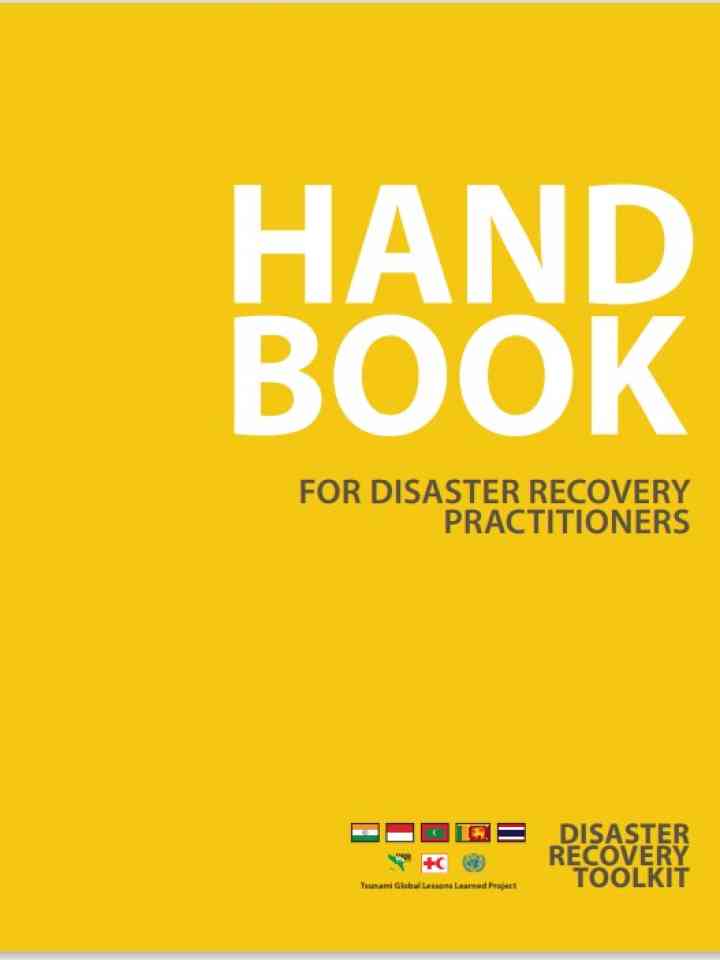Handbook for Disaster Recovery Practitioners
Each Recovery and Reconstruction (R&R) programme is considered unique and off ers a plethora of learning for policy makers and practitioners engaged in post-disaster recovery.
The Handbook for Disaster Recovery Practitioners has derived learnings and good practices in the form of 'key considerations' from large-scale R&R programmes undertaken in the aft ermath of disasters from Asia and other regions.
The learning has been derived from large-scale R&R programmes implemented in the last two decades in Asia, from 1993 to 2008. Th e R&R programmes related to Pakistan Floods in 2010 and East Japan Earthquake & Tsunami 2011 has been unfolding at the time of development of the Handbook, hence limited learning from these programmes has been included in diff erent chapters, including the Epilogue.
Recovery and reconstruction (R&R) oft en simply referred to as 'recovery' is one of the key components of disaster management. It has been defi ned as "Restoration, and improvement where appropriate, of facilities, livelihoods, and living conditions of disaster-aff ected communities, including eff orts to reduce disaster risk factors."
Opinions diff er with regards to the starting point of R&R, ranging from the day the disaster strikes to the period aft er emergency relief has been completed. According to UNISDR, "the recovery task of rehabilitation and reconstruction begins soon aft er the emergency phase has ended".
Explore further
